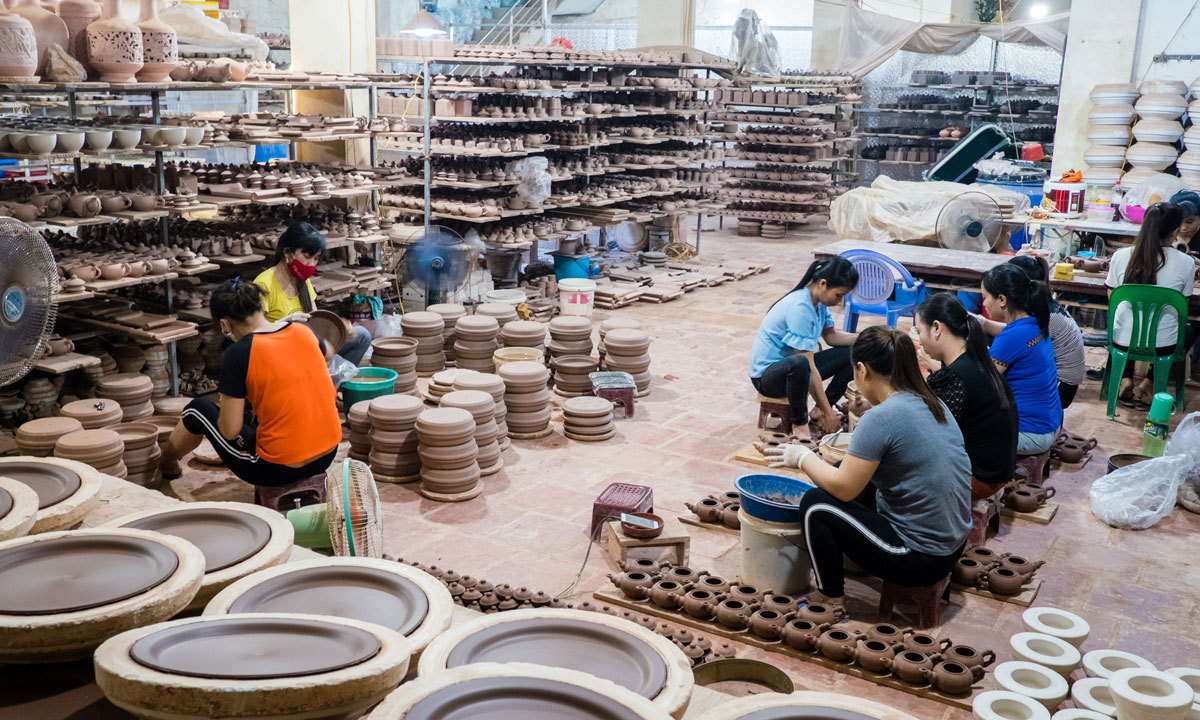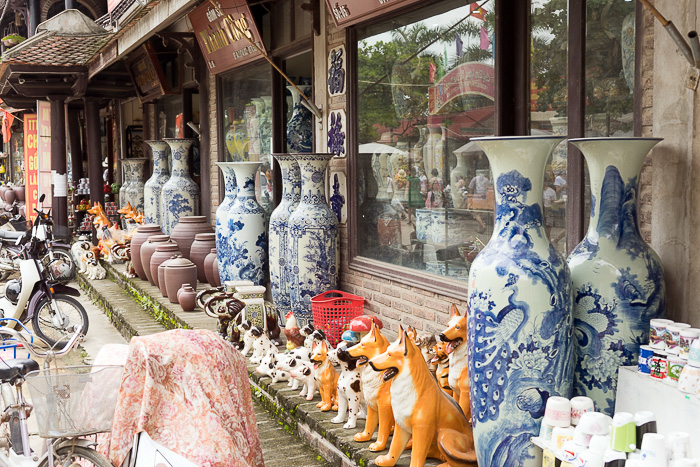News
Bat Trang Ceramic Village – Discover Timeless Artistry and Cultural Heritage
Bat Trang ceramic village is a renowned traditional pottery village located near Hanoi, Vietnam. Known for its exquisite craftsmanship, Bat Trang ceramic village has been producing high-quality ceramics for over 700 years. Visitors and artisans alike appreciate its unique blend of ancient techniques and modern innovations. This article delves deep into the world of Bat Trang ceramic village, exploring its history, significance, and how to experience and use its beautiful products.
Bat Trang ceramic village offers a fascinating glimpse into Vietnamese culture through its pottery art. Whether you are an artist looking for inspiration or a traveler seeking authentic souvenirs, Bat Trang has something special to offer.
The Rich History and Cultural Significance of Bat Trang Ceramic Village

Understanding the historical roots of Bat Trang ceramic village enriches appreciation for the artistry and dedication behind every piece created here. This section explores the origins and cultural importance of the village’s pottery tradition.
Before diving into specific aspects, it is crucial to grasp how centuries of craftsmanship shaped Bat Trang into a cultural icon.
The Origins of Bat Trang Ceramic Village
Bat Trang village traces its pottery tradition back to the 14th century during the Ly-Tran dynasties. Situated along the Red River, the region’s abundant clay deposits made it ideal for pottery making. The villagers passed down their skills orally and practically from generation to generation, preserving ancient methods.
The early ceramics were simplistic but functional, catering primarily to daily household needs. Over time, intricate designs and glazing techniques evolved, reflecting the artistic growth and exposure to different cultures via trade.
Cultural Role of Pottery in Vietnamese Society
Pottery has always played a significant role beyond utility in Vietnamese culture. Ceramics from Bat Trang were used in rituals, religious ceremonies, and as symbols of prosperity and status. Many patterns incorporate folklore, mythology, and nature motifs, embedding storytelling within pottery.
This interplay between functionality and meaning elevates Bat Trang pottery from mere craft to cultural heritage. It represents the identity and resilience of Vietnamese people and their respect for tradition.
Evolution of Techniques and Styles Through Time
Throughout history, Bat Trang potters experimented with materials like white clay, glazes, and firing methods. Influences from Chinese and Khmer artisans introduced new aesthetics and technical improvements. The village adapted to changing demand by diversifying styles—from classic blue-and-white porcelain to vibrant multicolor ceramics.
Despite modernization, many families continue to handcraft pieces using age-old techniques, ensuring authenticity. This perfect balance of preservation and innovation defines Bat Trang ceramic village today.
Exploring the Artistic Techniques and Craftsmanship at Bat Trang

The hallmark of Bat Trang ceramic village lies in its meticulous craftsmanship and innovative artistry. This section highlights the steps and skills that transform raw clay into stunning ceramics.
Before understanding usage or comparisons, appreciating the process gives insight into why Bat Trang ceramics are so valued worldwide.
From Clay to Creation: The Making Process
The journey begins with sourcing local clay, which is refined by removing impurities. The prepared clay is then shaped by hand or on a potter’s wheel, requiring precision and control. Skilled artisans mold pots, vases, plates, and figurines, sometimes incorporating complex shapes.
Once formed, pieces dry slowly to prevent cracks. After drying, they are decorated using various techniques such as hand painting, carving, or applying colored slips.
Glazing and Firing – The Secrets Behind the Finish
Glazing is critical to both durability and beauty. Bat Trang potters use natural mineral-based glazes that produce a glossy, smooth surface. The glaze composition influences the color and texture, giving each piece its distinctive look.
Firing occurs in kilns at high temperatures (around 1200°C). This process vitrifies the clay and glaze, making ceramics waterproof and sturdy. Traditional wood-fired kilns add unique effects like smoky hues, while modern gas kilns offer consistency.
Unique Artistic Features and Motifs
Bat Trang ceramics often feature traditional Vietnamese motifs such as lotus flowers, dragons, phoenixes, and bamboo. These symbols represent purity, strength, and longevity. The careful brushwork captures delicate lines and fluid forms that breathe life into static objects.
Additionally, some artisans integrate contemporary designs, blending old and new to appeal to diverse tastes. This dynamic artistic expression keeps Bat Trang ceramics relevant and collectible.
How to Use Bat Trang Ceramic Village Products in Daily Life and Décor

Bat Trang ceramic village products are not only artistic masterpieces but also highly functional items suitable for everyday use and decorative purposes. Here, we explore practical ways to incorporate these ceramics into your lifestyle.
Knowing how to use Bat Trang ceramics enhances their value beyond aesthetics, connecting users to history and craftsmanship.
Functional Tableware for Meals and Entertaining
One of the most common uses of Bat Trang ceramics is as tableware—plates, bowls, cups, and teapots. Their durable glaze makes them suitable for hot foods and beverages. Using these handcrafted pieces adds charm and sophistication to meals.
Moreover, serving guests with Bat Trang ceramic sets can create a memorable dining experience infused with cultural richness.
Home Décor and Artistic Displays
Beyond utility, Bat Trang ceramics serve as decorative art pieces. Vases, sculptures, and ornamental tiles brighten interiors with their colors and textures. Displaying ceramics on shelves or as centerpieces can become conversation starters.
Combining traditional pottery with modern furniture creates a harmonious fusion of styles, blending rustic and contemporary aesthetics.
Gifts and Souvenirs That Symbolize Heritage
Bat Trang ceramic items make meaningful gifts. Their uniqueness and cultural symbolism communicate respect and appreciation. Tourists visiting Vietnam often purchase Bat Trang pottery as souvenirs, bringing home a slice of Vietnamese heritage.
Selecting pieces that reflect personal taste or occasions—such as wedding gifts or housewarming presents—adds sentimental value.
Comparing Bat Trang Ceramic Village with Other Famous Pottery Traditions

To better understand Bat Trang ceramic village’s distinctiveness, it helps to compare it with other renowned pottery centers globally and regionally. This perspective reveals strengths and uniqueness.
By examining similarities and differences, collectors and enthusiasts can make informed choices.
Bat Trang vs. Jingdezhen Porcelain from China
Jingdezhen is known as the “Porcelain Capital” with a history surpassing a thousand years, famous for its translucent white porcelain and blue designs. While Bat Trang pottery shares some blue-and-white motifs, its clay base is thicker and less translucent.
Bat Trang favors more earthy tones and tactile textures, embracing rustic charm compared to Jingdezhen’s pristine elegance. Both traditions emphasize hand-painting but exhibit distinct cultural artistry.
Comparison with Japanese Arita Ware
Arita ware features bright colors and precise glazing techniques influenced by Korean and Chinese pottery. Bat Trang ceramics tend to be less glossy but rich in symbolic motifs rooted in Vietnamese legends.
Arita’s streamlined shapes contrast with Bat Trang’s often more robust and organic forms. Each style reflects its cultural environment, making them complementary rather than competing.
Regional vs. Mass-Produced Ceramics
Compared to industrial mass-produced ceramics, Bat Trang products maintain individuality and character. Handmade processes result in slight variations, enhancing authenticity. Mass production focuses on uniformity and cost efficiency but lacks the soul imbued by artisans.
Choosing Bat Trang pottery supports sustainable crafts and preserves intangible cultural heritage in an age of mechanization.
Tips and Advice for Visiting and Buying from Bat Trang Ceramic Village
When planning a trip to Bat Trang ceramic village or purchasing its products, knowing insider tips ensures a fulfilling experience. This section advises on how to navigate the village and select genuine ceramics.
Preparation and awareness help visitors avoid common pitfalls while maximizing enjoyment and value.
Best Times and Ways to Visit
The best time to visit Bat Trang is during spring or autumn when the weather is pleasant. Weekdays tend to be quieter than weekends, allowing for leisurely exploration. Guided tours provide historical background and access to workshops.
Walking around the village streets offers opportunities to see artisans at work and participate in pottery-making classes.
How to Identify Authentic Bat Trang Ceramics
Authenticity matters when buying pottery. Genuine Bat Trang ceramics bear signs of handcrafting—slight imperfections, hand-painted details, and traditional motifs. Beware of overly uniform pieces or suspiciously low prices, which could indicate mass production.
Reputable shops often display certificates or collaborate directly with makers.
Bargaining and Pricing Advice
Negotiation is customary in Bat Trang markets but should be respectful. Starting with about 70% of the asking price is a common practice. Understanding the quality and labor involved helps justify costs.
Purchasing directly from workshops may yield better deals and insights into the creation process.
Conclusion
Bat Trang ceramic village stands as a living testament to Vietnam’s rich cultural heritage and artistic excellence. Its centuries-old pottery tradition combines skilled craftsmanship, meaningful symbolism, and functional beauty, making its ceramics highly prized across the world. Whether admired as art, used in daily life, or collected as souvenirs, Bat Trang ceramics connect us to a timeless legacy. Exploring the village, learning its history, and understanding the unique qualities of its products allow anyone to appreciate this extraordinary craft deeply. For travelers, artists, and collectors alike, Bat Trang ceramic village offers a rare blend of tradition and creativity waiting to be discovered.
